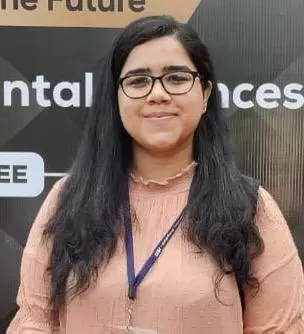- Home
- Medical news & Guidelines
- Anesthesiology
- Cardiology and CTVS
- Critical Care
- Dentistry
- Dermatology
- Diabetes and Endocrinology
- ENT
- Gastroenterology
- Medicine
- Nephrology
- Neurology
- Obstretics-Gynaecology
- Oncology
- Ophthalmology
- Orthopaedics
- Pediatrics-Neonatology
- Psychiatry
- Pulmonology
- Radiology
- Surgery
- Urology
- Laboratory Medicine
- Diet
- Nursing
- Paramedical
- Physiotherapy
- Health news
- Fact Check
- Bone Health Fact Check
- Brain Health Fact Check
- Cancer Related Fact Check
- Child Care Fact Check
- Dental and oral health fact check
- Diabetes and metabolic health fact check
- Diet and Nutrition Fact Check
- Eye and ENT Care Fact Check
- Fitness fact check
- Gut health fact check
- Heart health fact check
- Kidney health fact check
- Medical education fact check
- Men's health fact check
- Respiratory fact check
- Skin and hair care fact check
- Vaccine and Immunization fact check
- Women's health fact check
- AYUSH
- State News
- Andaman and Nicobar Islands
- Andhra Pradesh
- Arunachal Pradesh
- Assam
- Bihar
- Chandigarh
- Chattisgarh
- Dadra and Nagar Haveli
- Daman and Diu
- Delhi
- Goa
- Gujarat
- Haryana
- Himachal Pradesh
- Jammu & Kashmir
- Jharkhand
- Karnataka
- Kerala
- Ladakh
- Lakshadweep
- Madhya Pradesh
- Maharashtra
- Manipur
- Meghalaya
- Mizoram
- Nagaland
- Odisha
- Puducherry
- Punjab
- Rajasthan
- Sikkim
- Tamil Nadu
- Telangana
- Tripura
- Uttar Pradesh
- Uttrakhand
- West Bengal
- Medical Education
- Industry
14 Extra Steps a Minute Could Improve Mobility in Seniors: Study Suggests - Video
Overview
A pair of new studies from the University of Chicago Medicine, published in PLOS ONE and Digital Biomarkers, reveal that modestly increasing walking pace by just 14 steps per minute can significantly improve physical function in frail or prefrail older adults. The researchers also developed a user-friendly smartphone app, “Walk Test,” to accurately track walking cadence, making this simple health intervention more accessible for daily use.
Walking pace, or cadence, is a practical way to gauge walking intensity and is particularly relevant for older adults, many of whom face mobility challenges. Daniel Rubin, MD, an anesthesiologist at UChicago Medicine, was inspired to explore walking cadence as a clinical tool after observing the limitations of questionnaires used to assess surgical risks in elderly patients.
In one study, Rubin and his colleagues conducted a secondary analysis of a randomized controlled trial involving frail and prefrail seniors participating in structured walking programs in retirement communities. Participants were assigned to either walk at their usual pace or “as fast as safely possible.” Cadence was measured using a sensor placed on their thigh.
The results were clear: individuals who increased their pace by just 14 steps per minute reaching about 100 steps per minute saw measurable gains in their ability to walk longer distances during standardized tests. “People who haven’t experienced frailty can't imagine how big a difference it makes to be able to not get tired going to the grocery store or not need to sit down while they're out,” Rubin said.
To make this health intervention more practical, Rubin’s team also created the “Walk Test” app. Unlike standard smartphone step counters, the app uses a novel open-source algorithm and brief, deliberate walking tests to ensure high accuracy in cadence measurement. “We wanted to make it as low-barrier as possible so it’s easy for older adults to use without additional equipment,” Rubin explained. “The people who need the most help are usually the least well-equipped to get started.”
The studies suggest that even small adjustments in walking habits can significantly benefit older adults' health, helping them stay more independent. Rubin added, “Even casual walking had positive effects on our study participants.”
Reference: Rubin DS, Hung A, Yamamoto E, Hedeker D, Conroy DE, Huisingh-Scheetz M, et al. (2025) Walking cadence as a measure of activity intensity and impact on functional capacity for prefrail and frail older adults. PLoS One 20(7): e0323759. https://doi.org/10.1371/journal.pone.0323759
Speakers
Dr. Bhumika Maikhuri
BDS, MDS



